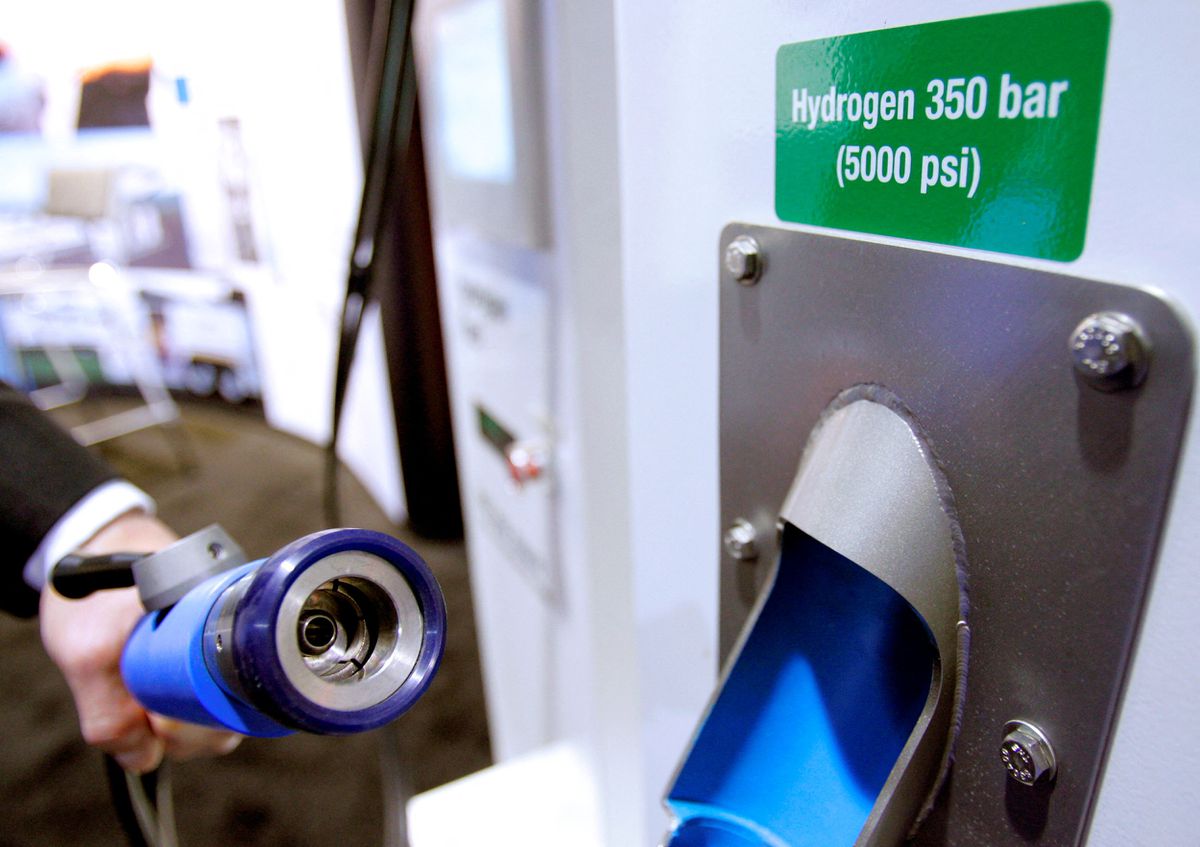 A hydrogen pump is displayed at the National Hydrogen Association's (NHA) annual convention in Long Beach, California March 13, 2006. REUTERS/Mario Anzuoni
A hydrogen pump is displayed at the National Hydrogen Association's (NHA) annual convention in Long Beach, California March 13, 2006. REUTERS/Mario Anzuoni
Major industries, including energy, steel and chemicals, are looking at how to switch to hydrogen as a fuel to help to reduce carbon emissions.
Hydrogen is one of the most abundant elements in the universe, but traditional methods of producing it at scale release large amounts of carbon dioxide.
There are ways to produce the gas that are more climate friendly and hydrogen has been colour-coded to reflect its carbon footprint.
Hydrogen extracted using power from renewable energy such as wind or solar is "green".
Here are details about green, grey, blue and turquoise hydrogen:
Green hydrogen
Produced using renewable energy, which could include offshore wind and solar, to power electrolysis plants, which split water into hydrogen.
Green hydrogen can be stored, piped, or carried by tankers to consumers, for example to serve hydrogen filling stations.
Grey hydrogen
Grey hydrogen is extracted from coal or natural gas using steam-methane reforming, which is currently the standard industry process.
Blue hydrogen
Blue hydrogen is produced in the same way as grey hydrogen but with CO2 emissions captured and then injected into underground or subsea storage such as depleted oil and gas fields. It is often presented as a transitional approach until green hydrogen output can be scaled up.
Turquoise hydrogen
Also called low-carbon hydrogen, and so far very small scale, this is hydrogen generated from natural gas but using pyrolysis - the gas is passed through molten metal, producing solid carbon as a byproduct with useful applications.
Pink hydrogen
Generated through electrolysis powered by nuclear energy.
